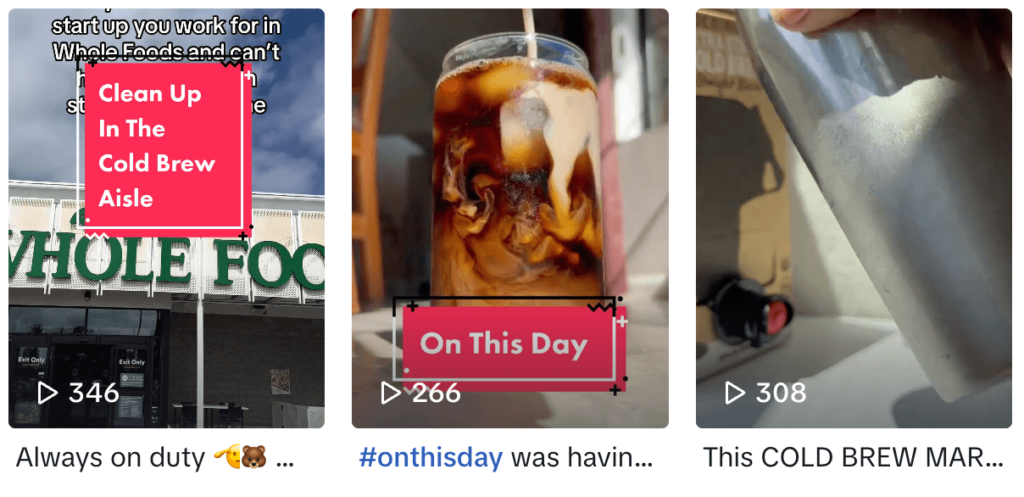Recent years have shown us that social media is here to revolutionize the way we interact with brands online.
Having a strong social media presence provides numerous benefits to ecommerce brands that can set them apart from their competitors and be an integral component of their marketing strategy. The power of ecommerce social media is unparalleled: The net that you can cast now can span the vastness of the internet, compared to days past when you were limited by advertisements on street corners.
Having a strong social media marketing strategy is vital to the success of an ecommerce business and can help businesses survive market saturation. In this blog post, we’ll explore how online stores can leverage social media marketing to improve customer retention and ultimately increase the lifetime value (LTV) of their customers.
Key takeaways
- A robust social media presence is vital for ecommerce businesses to stand out, reach a broader audience, and survive in a saturated market.
- Effective social media strategies can boost customer retention by engaging customers, providing personalized experiences, encouraging advocacy, and fostering strong relationships.
- Tailoring social media approaches to different platforms, understanding their objectives, and managing them well will enhance impact and loyalty among customers.
What the rise of ecommerce social media has taught us
Which came first: the brand, or the social channels?
It used to be that brands were created and the social media accounts follow—but in CrunchLabs’ case, their monthly subscription box was conceived through former NASA engineer Mark Rober’s success on YouTube, heavily relying on his social networks for reach and adoption.

This has actually become a very normal phenomenon as more and more creators gain popularity on social media platforms, building out their own network of followers and generating brand awareness for their most lucrative brand: themselves. What often follows next is an extension of their personal brand into that of a physical product to diversify the various channels they can generate profit from.

Chamberlain Coffee is another example of this. Emma Chamberlain’s rise to internet fame opened the door for her to create an ecommerce store selling her own personal brand of coffee, where her loyal followers became the best potential customers to target.
This phenomenon has trained the masses that the best place to purchase from is the one you know intimately, garnered through an effective social media content strategy that utilizes community building online as a method of cultivating brand trust and loyalty.
The online customer journey isn’t reserved for just online merchants, either. Brick-and-mortar stores that want to survive rising costs and saturated markets need to find the happy medium of physical and online presence in order to meet their target audience exactly where they shop.
The growing popularity of online shopping is enabling retailers to bring their businesses online, whether it’s for the purpose of being discovered or to provide convenience for paying customers.
So, how can businesses leverage their social platforms to keep existing customers happy?
How a solid social media strategy can boost customer retention
In order to execute the best path forward, it’s important to understand the why. This can be especially important for marketing teams when proposing new campaigns to drive traffic and increase conversions.
Leveraging social media networks can drive a number of benefits by:
- Building brand awareness through an engaging and interactive social media presence.
- Providing personalized customer experiences through targeted messaging and content.
- Encouraging customer advocacy and word-of-mouth referrals through social sharing.
- Enhancing customer support and responsiveness through social media channels.
- Creating a sense of community and fostering customer relationships through social media interactions.
How to think about social media marketing
Most social media platforms take bits and pieces from one another, but that doesn’t mean that your strategy across each will look the same. In order to have the best chance of reaching or cultivating an engaged audience, you need to understand what performs well on the different social media sites you manage.
An effective strategy boils down to knowing your social media platform and managing it well.
- Know your social media platform
While it’s important to understand your own brand’s objective on social media, it’s arguably more important to understand what the objective of the social media platform is. Ask yourself:
- What is the purpose of this platform?
- Who is using this platform?
- What are the users hoping to gain from this platform?
- What does this platform prioritize?

We can see this difference illustrated in Wandering Bear’s Instagram posts in comparison to their TikTok posts.
Expanding your reach on Instagram is done either organically or through paid advertising, and if you’re looking to cut down on costs, organic reach is likely a better option, though increasingly more difficult to pull off. These posts get engagement because they are either helpful, relatable, or tied to emotion to stand out from the social media ads that now inundate the land of Instagram.
TikTok, on the other hand, seems to be more reminiscent of what Instagram used to be like when organic reach was much easier, although they’ve also more recently introduced paid ads to the platform. In the span of just a couple of years, TikTok, which gained popularity during the pandemic, has already transformed dramatically.
Potential customers on social media look to user-generated content on TikTok for its raw, unfiltered experience—while those same customers may look to Instagram for the branding and aesthetic. Regardless, it’s important to have diverse social proof available to your audience in the form of user-generated content and customer testimonials on your channels.

- Manage your social media accounts well
With the context of each social media channel handy, it’s also important to manage them well. This involves a number of strategies, which we’ll highlight below.
Use the right tools & features
Ecommerce retailers should be aware of what tools and features are available to manage their accounts, whether it’s externally or internally. As a business owner, you should be utilizing a business page on Instagram, for example, in order to generate metrics and measure performance for specific posts and stories. Often, platforms will provide insight like when the best time to post is based on when most of your followers are active.
Post at an appropriate cadence
On the note above, it’s important to feed the algorithm exactly what it wants to have the best chance of generating organic reach and engaging your followers. This will increase the chances your posts will be seen by the right people, and more frequently, teach the algorithm to favour your posts overall.
Engage consistently
Consistently engage with your audience in a tone that is in line with your brand and the platform. For example, Facebook is generally for a more mature audience, while casual talk is the preference of TikTok.
Your brand should also note that unhappy customers are more likely to find you on social media where they can make their disappointment known to many. For this reason, it’s important to keep your customer support consistent across the various channels so you can manage and mitigate undesired behaviour.
Engaging with positive behaviour is another important aspect of today’s social media. Responding to positive content shows your customers that you care about them, see them, and it elicits a feeling of closeness that increases the likelihood of them advocating for your brand, and purchasing again.
Test & analyze
Utilize your social media analytics to collect data around your strategy and then reevaluate. A strong strategy is always born through iteration. Most platforms have inherent data available on business accounts, but you can also funnel data from multiple sources into a single dashboard through various technologies available. You can also run different experiments, like influencer marketing campaigns, to test what sort of strategy resonates with your audience.
The point is to personalize the experience for your customers to keep them loyal and encourage repeat purchases. Customers want to know that you know them well.
Push the envelope
At the end of the day, ecommerce users need to test their limits and innovate. Try something new and shock your audience with something they’ve never seen before, or present them with something old but in a new way.
Your customers are probably already social media users
So meet them where they are.
Now more than ever, having a strong social media presence can impact the way your customers interact with and perceive your brand, and influence the way they purchase. By understanding the platforms with which they interact with your brand and managing them well, you can foster a strong online community and create longer-lasting relationships with your customers.
Sources
[1] Lifetime value (Ecommerce glossary)
[2] To be or not to be in social media: How brand loyalty is affected by social media? (Research)
[3] TikTok launches new ad solutions with smarter targeting and amplified product discovery (News article)



